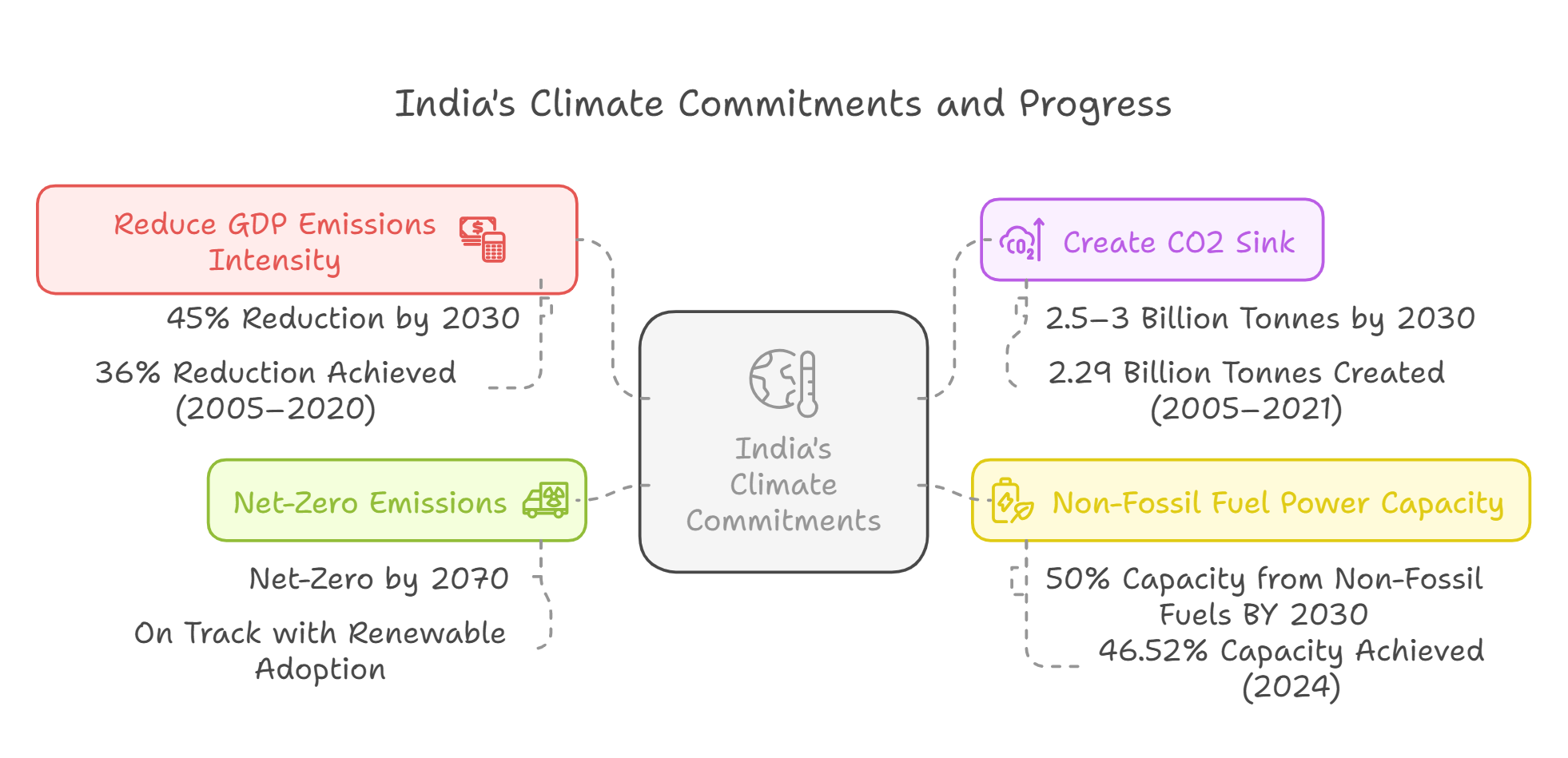Rapid Fire
BTR and BUR under Paris Agreement
- 21 Feb 2025
- 2 min read
India is set to submit its first-ever Biennial Transparency Report (BTR) under the Paris Agreement, which will be subject to an independent expert review by the United Nations Framework Convention on Climate Change (UNFCCC).
- BTR: Under the Paris Agreement, 2015, countries must submit BTRs every two years to enhance transparency in climate action. Small Islands Developing States (SIDS) and Least Developed Countries (LDCs) can submit at their discretion.
- These reports track progress on national greenhouse gas (GHG) inventories, Nationally Determined Contributions (NDCs), and climate adaptation measures.
- BUR: India has previously submitted Biennial Update Reports (BUR), with the last one in 2024 (BUR- 4), covering data till 2020.
- Key Highlights of BUR 4:
- India’s Emissions by Gas: Carbon dioxide (80.53%), Methane (13.32%), Nitrous oxide (5.13%), and others 1.02%.
- Emissions by sector: Energy (75.66%), Agriculture(13.72%), Industrial Process and Product Use (IPPU) (8.06%), and Waste(2.56%).
- Forests & Tree Cover: Sequestered 522 million tonnes (mt) of CO₂, equivalent to reducing 22% of the country's total carbon dioxide emissions in 2020.
- Emission Intensity Reduction: 36% decrease in emissions intensity (2005–2020), with India on track to achieve its target of a 45% reduction by 2030.
- As of 2020, India’s emissions, excluding land use, land-use change and forestry (LULUCF), stood at 2,959 mt of CO2e. Including LULUCF, net emissions were at 2,437 mt of CO2e.
Read more: WMO's Greenhouse Gas Bulletin 2023





